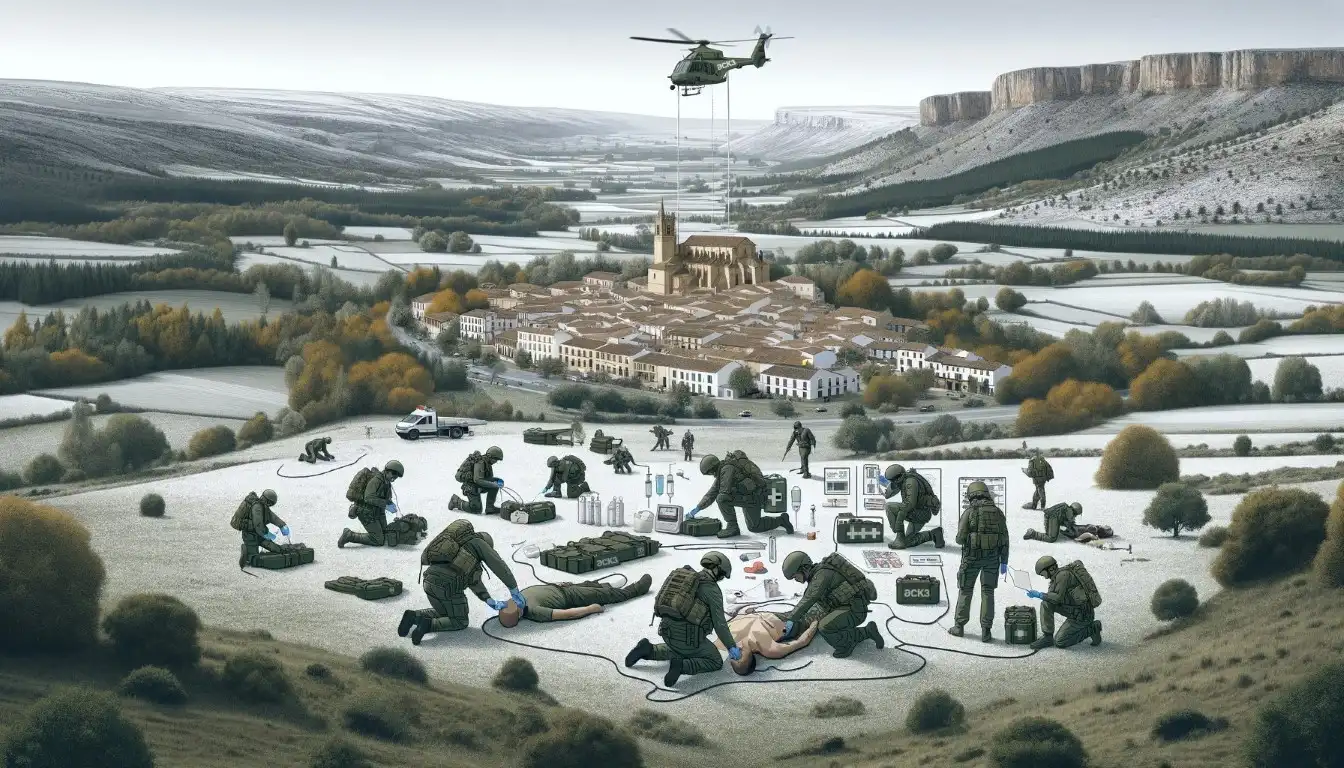Tactical Combat Casualty Care (TCCC)
This program is offered by ACK3 to provide comprehensive training in battlefield medical response techniques, focusing on saving lives in combat situations. It is designed for military personnel, combat medics, and first responders to enhance their skills in providing immediate and effective medical care under fire.
What is the TCCC Course?
The Tactical Combat Casualty Care (TCCC) Course is a specialized training program that aligns with the latest guidelines and practices for treating life-threatening injuries on the battlefield. It emphasizes the three phases of tactical care: Care Under Fire (CUF), Tactical Field Care (TFC), and Tactical Evacuation Care (TEC). The course is crucial for enhancing the survivability of wounded personnel in combat and operational settings.

Duration
The duration of the TCCC course typically ranges from a few days to a week, providing an intensive, hands-on learning experience. Training is conducted at ACK3’s state-of-the-art facility in Castilla-La-Mancha, equipped with simulation environments and medical training equipment to replicate combat scenarios.
Contents
The ACK3 TCCC course curriculum is designed to equip participants with the skills and knowledge necessary to effectively manage combat casualties. Key components of the training include:
- TCCC guidelines: An overview of the TCCC guidelines developed by the Committee on Tactical Combat Casualty Care, tailored for different combat environments.
- Care Under Fire (CUF): Techniques for providing immediate lifesaving measures while under hostile fire, including the use of tourniquets and hemorrhage control.
- Tactical Field Care (TFC): Skills for assessing and managing casualties when the threat level is reduced, focusing on airway management, ventilation, and preventing hypothermia.
- Tactical Evacuation Care (TEC): Procedures for stabilizing and preparing casualties for evacuation to higher levels of care, with emphasis on casualty movement techniques.
- Hemorrhage control: Use of tourniquets, hemostatic agents, and pressure dressings to control severe bleeding.
- Airway management: Techniques for ensuring an open airway in unconscious or severely injured casualties, including the use of nasopharyngeal airways and cricothyrotomy.
- Breathing and ventilation: Management of chest injuries, such as tension pneumothorax, and the use of chest seals and needle decompression.
- Circulation and shock: Recognition and management of shock, including intravenous and intraosseous access and fluid resuscitation.
- Head and spinal injuries: Assessment and stabilization of head and spinal injuries to prevent further harm.
- Hypothermia prevention: Methods for maintaining body temperature and preventing hypothermia in injured personnel.
- Casualty evacuation: Techniques for safely moving and evacuating casualties using various carries and evacuation platforms.
- Scenario-based Training: Realistic simulations and role-playing exercises to apply TCCC principles in various tactical scenarios.
ACK3’s TCCC course combines theoretical knowledge with practical, hands-on training, including realistic simulations to reinforce learning and ensure participants are prepared to apply TCCC principles in real-world situations. The course is designed to build confidence and proficiency in battlefield medical care, ultimately aiming to improve the survivability of combat casualties.
